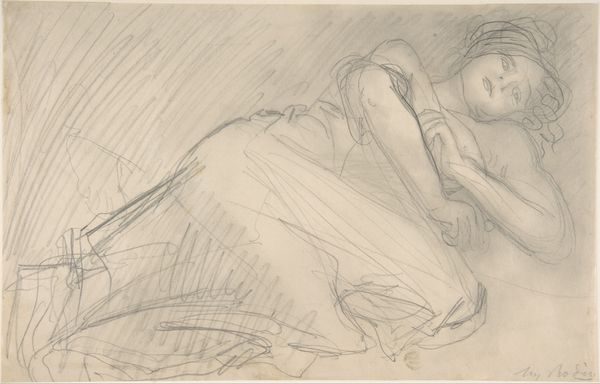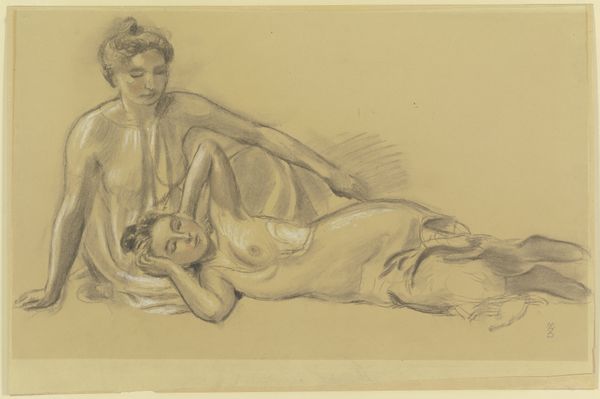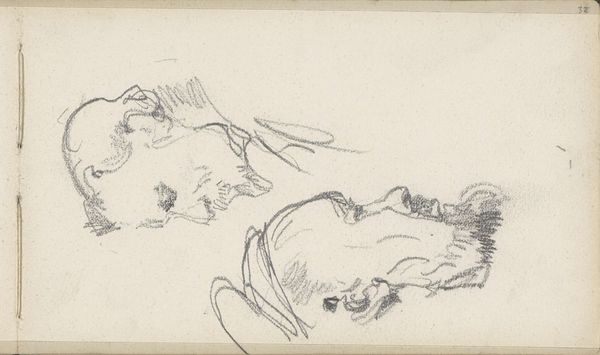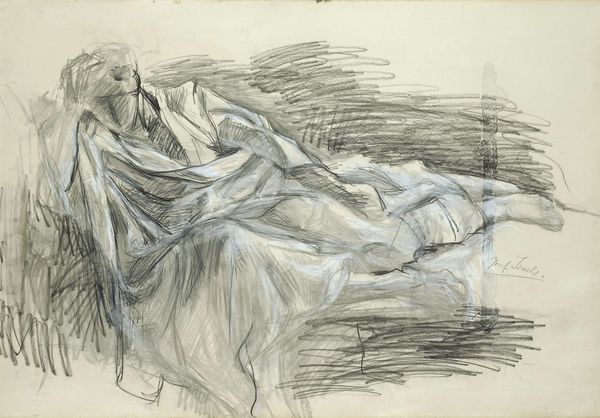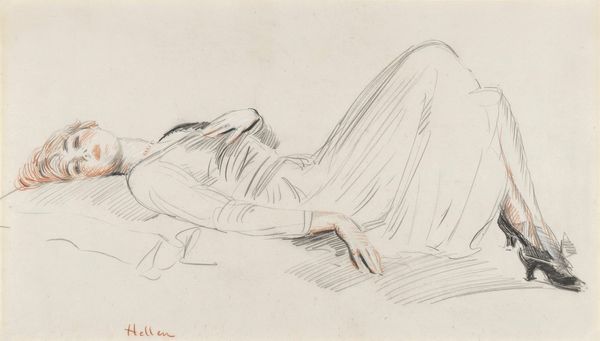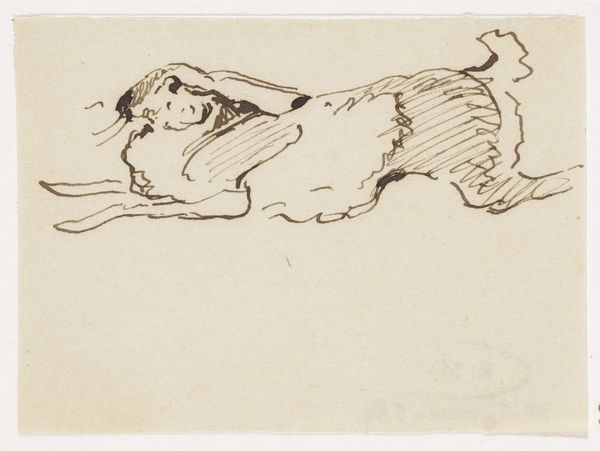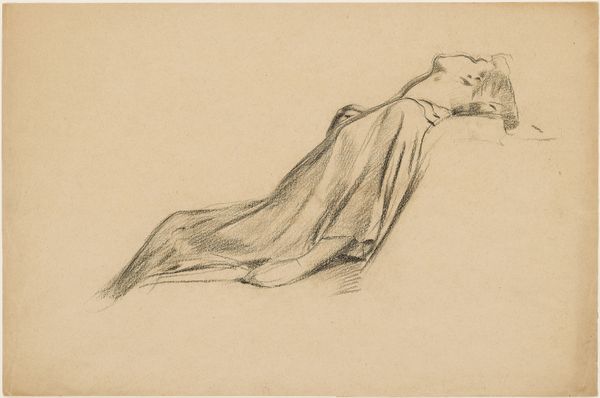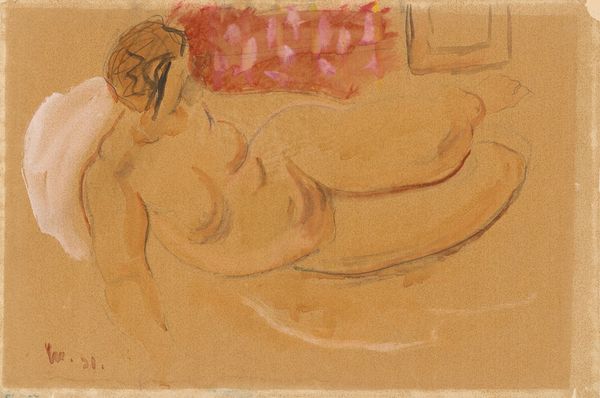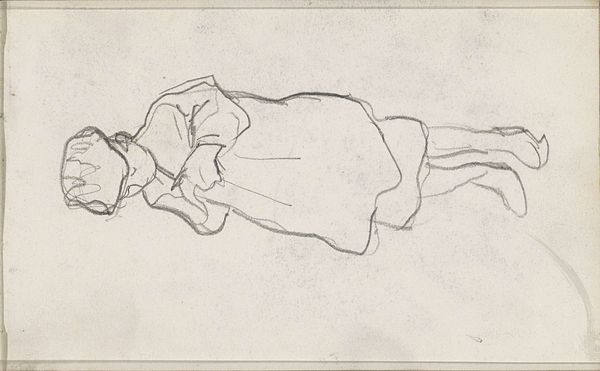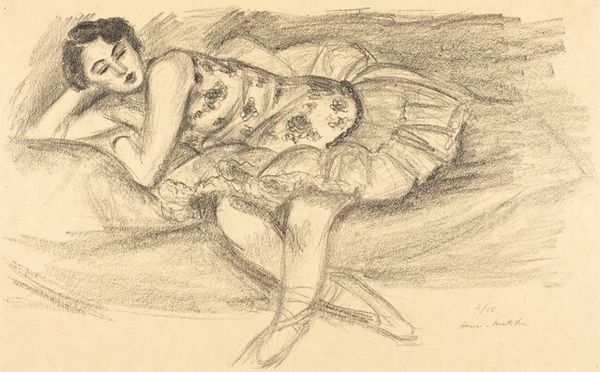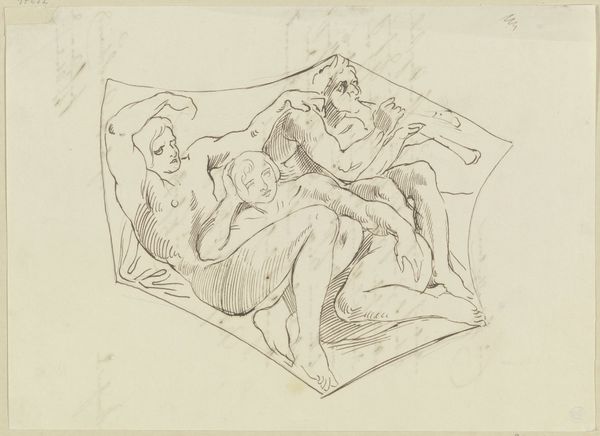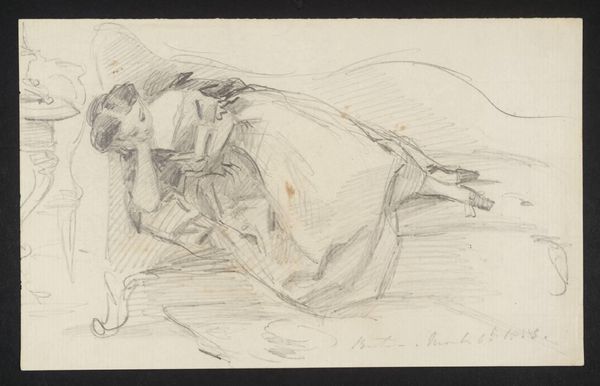
drawing, charcoal
#
portrait
#
drawing
#
figurative
#
charcoal drawing
#
figuration
#
intimism
#
charcoal
Copyright: Public Domain: Artvee
Editor: This is Paul César Helleu's charcoal drawing, "Jeune femme au divan," which translates to "Young woman on a sofa". The overall impression is one of languid leisure. What stands out to me is the intimacy of the scene, a woman seemingly lost in her own world. How do you interpret this work? Curator: It is quite fascinating. Considering the artist's context, this work can be viewed through a feminist lens, interrogating the portrayal of women in art during this period. The woman, reclining on the divan, holding her hat, may represent a member of the upper class, yet her vulnerability is revealed. Is she resting or oppressed? The very act of representing her in such a posture – available for the male gaze – prompts questions of power dynamics. Does the composition subvert those expectations, and if so, how? Editor: So you're saying that although it initially appears as just a scene of relaxation, there’s a potential commentary on the restricted roles of women? The position and the gaze could be viewed as complicit. Curator: Precisely. Also, the stylistic choice to present it in a rough sketch format might have been interpreted at the time as 'raw' or modern, against more academic or realist approaches. How does it position her class in a particular place and time? Consider the 'intimacy' tag on this work; might it reflect anxieties and ambivalence about female interiority and what the rising culture industry might be selling, back then? Editor: That's a great way to think about it! I hadn’t considered the potential critique embedded within the supposed relaxation. Curator: By engaging with social theories we can decode visual narratives. This approach enables us to observe that the aesthetic beauty of the art, and its social context, intertwine to reflect socio-cultural structures. The power dynamics of gender and the artistic techniques themselves were tools which shaped viewers' understandings. Editor: This has made me realize just how important the context is when viewing a work of art. There's always much more than meets the eye.
Comments
No comments
Be the first to comment and join the conversation on the ultimate creative platform.
